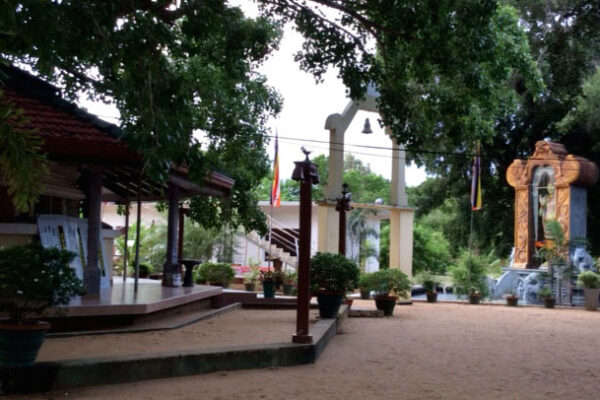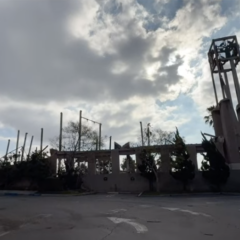During visit to observe a Los Angeles-based mindfulness group a few months ago, the teacher asked me to explain to her students the significant role that dana, one of the ten pāramitā (perfections) of Buddhism, plays in the spiritual lives of Theravada Buddhists living in Sri Lanka. Drawing both from my personal and professional experiences amongst Sri Lankan Buddhists, I offered the class an anthropological explanation of contemporary dana: how practices of giving alms to monks and the Buddhist institution, as well as giving aid to the poor, are inspired by ideas about good karmic merit, happy rebirth and the cultivation of an ethic of generosity.
Dana as an intrinsic good can be a hard sell to American Buddhists. Some Dharma-based meditation groups in the West struggle to encourage their students to donate money in the form of dana to help support their lay teachers, programs and the financial upkeep of the spaces. As a result, an increasing number of meditation centers are integrating more mainstream secular mindfulness programs into their curriculum wherein they can charge fees for courses like Mindfulness Based Stress Reduction (MBSR), unlike training in Dharma-based Vipassana meditation. Indeed, many teachers are finding that they are better able to support themselves as MBSR instructors than as dana-based Dharma gurus.
One reason for this is because Buddhist meditation has become popular among a growing cohort of Americans looking for a personal spiritual practice that is unaccompanied by dogmatic faith, hierarchies of authority and issues of religious preservation. As such, most serious practitioners of Buddhist meditation in America question patronage to religious institutions, and are doubtful about cosmological ideas of merit and rebirth integral to dana.
I was reminded of this issue during a recent visit to Sri Lanka when I encountered the work of a local Buddhist monk that successfully drew upon local networks of dana patronage to socially and economically rehabilitate an underserved community in the rural province of Pollonaruwa. The story illustrates what the Dharma teacher wanted me explain to her class—that dana is traditionally important in the institutional sustenance of the Buddhist establishment. It also has the potential to orient Buddhists towards social work, an issue that American Buddhist communities are beginning to address.
When Abbot Pradeepavansa, who is just 32 years old, took residence as the head priest of a dilapidated and neglected village temple seven years ago, he knew he faced a formidable challenge. According to his account, Thambalavava, a village of about 210 households, had a notorious reputation as violent ghettoized village. It was a hot bed of illicit drugs and alcohol use and manufacturing, and it was informally governed by network of local gangsters hostile to the Buddhist temple, which was perceived as a competing authority figure. With only 20 percent of the village able to sustain themselves on farming and the remaining primarily relying on casual day labor, the economic prospects of the village were bleak. Neglected for decades by state government, the village had few resources. It lacked water, electricity and road infrastructure, and its schools lacked teachers and materials.
Dozens of monks had come and gone from the temple throughout the years, unable to sustain themselves in an area where few of the residents, although nominally Buddhist, attended temple or followed religious practice. Indeed, the issues this temple faced reflect broader patterns in the country. Many rural temples are closing their gates as a result of dwindling support from local communities, who have few resources to give dana to the temple.
Yet, as Abbot Pradeepavansa put it, he wanted to make a change in a place where it mattered. As the single monk residing in the temple, he committed himself working on what I observed as three interconnected, long-term issues: the economic uplift of the village, the spiritual development of the community, and the sustenance of the temple, the abbot and his monastic disciples. Together, the first two would help create a robust local congregation that could sustain the temple in its ongoing social and spiritual efforts for the community. As a monk from the Amarapura Buddhist lineage or nikaya, the final issues fit within the broader national concern among Sri Lankan Buddhists of declining number of temples in the country.
Abbot Pradeepavansa took a multi-pronged approach with dana playing an essential role. First, with the support of 30 residents he befriended in the community, he systematically visited every household, inquiring about their social and economic concerns. In essence, he conducted what in modern development parlance might be called an evaluation and needs assessment study.
Second, considering the lack of local resources in the local rural area to meet these needs, Abbot Pradeepavansa sought support for his intended project by visiting cities like Colombo and begging for dana from house to house. Many Buddhist consider dana to the sangha, specifically the monastic community, as the utmost good karmic deed to be practiced, and that by giving dana, one can acquire merit and cultivate happiness in this life and in the next birth. Thus for many middle and upper middle class Buddhists, supporting social development efforts of a monk like Pradeepavansa satisfies an impulse to help the poor, while also allowing them an opportunity to gain merit by sustaining a broader national Buddhist religious community.
So far, Abbot Pradeepavansa has found support to build wells for the community, provide school supplies and books to the poor youth, establish reverse osmosis water purification plants and enhance the religious programs offers at the temple. Significantly, he has also been able to build on networks of dana patronage, notably by a number of Sri Lanka women, to promote a story of success and bring government representatives’ attention to the community. His efforts in demanding state welfare service for the community have been well received. In the past couple of years, the government has given the village electricity supplies, a computer and Internet center and new roads. Some in the village have also received small grants and micro-loan assistance to establish their own businesses.
Meanwhile, Abbot Pradeepavansa has also ordained more than a dozen novice monks, ages 10-34, who are being given a religious education, as well as training in conducting similar clergy-led social development efforts. These efforts align with the larger mission of sustaining and developing the religious Buddhist establishment (sasana).
Certainly, the monk’s efforts might not address the gamut of social and economic malaise the community suffers from, some of which are deep and pervasive. Moreover, my brief observations of the temple and the community may also not reflect broader problems that exist in the village. Nonetheless, what this example illustrates is the significant difference religious ideas about dana and their associated cosmological reflections can make in the sustenance and continuation of the religious establishment.
Today, Abbot Pradeepavansa and a growing congregation of village residents regularly conducts religious ceremonies to attribute merit to those who have given generously to his work, as well as to the village devotees. Western mindfulness practitioners today may shy away from the cosmological ideas of merit and dana entwined in the traditional understandings of Buddhism, but it is hard to deny their role in sustaining religious practice and a community of faith in the long term. Indeed, like Abbot Pradeepavansa, they may even find within the seemingly “traditional” practices of Buddhism innovative and creative approaches to advance social justice and engage in their own communities.
Nalika Gajaweera was a senior research analyst with the USC Center for Religion and Civic Culture through 2023.





